Being productive at home is about getting the right things done, not everything done. That's why we built Bento Focus.
Name: Razvan Badea
Location: Bucharest, Romania
Occupation: Product Designer & Founder at Artone Studio
Room size: 10,42 m² (112 ft²)
Cost of setup: Around $1,9K on furniture/lighting/decorations, and about $11,5K on work devices/tech gear
Hello! Tell us a bit about yourself
Hey, I’m Razvan. I’m a designer and founder based in Europe.
I run Artone Studio, a design agency focused on helping early-stage startups build digital products, websites, and brands.
Most of our clients are pre-seed to Series B founders who need fast, reliable design without the overhead of building a full in-house team.
I’ve been designing since I was a kid and working professionally for over eight years now.
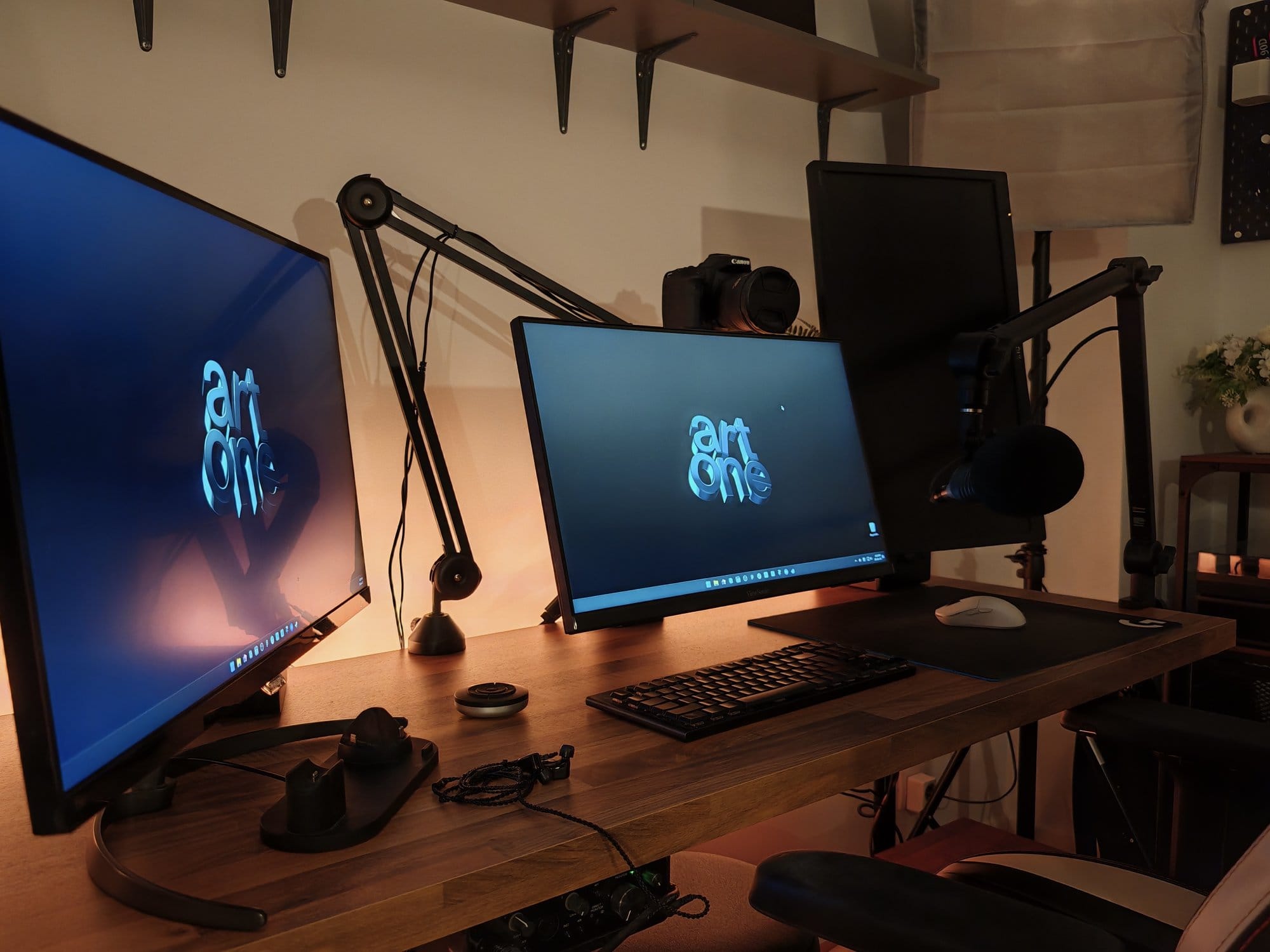
Along the way, I’ve worked with early-stage founders, global brands like Red Bull, Samsung, and KFC (mostly through media agencies), and even spent a period working full-time as Head of Product at a stealth startup backed by top Silicon Valley investors.
These experiences shaped how I think about design – not just as visuals, but as a tool to build real, valuable products.
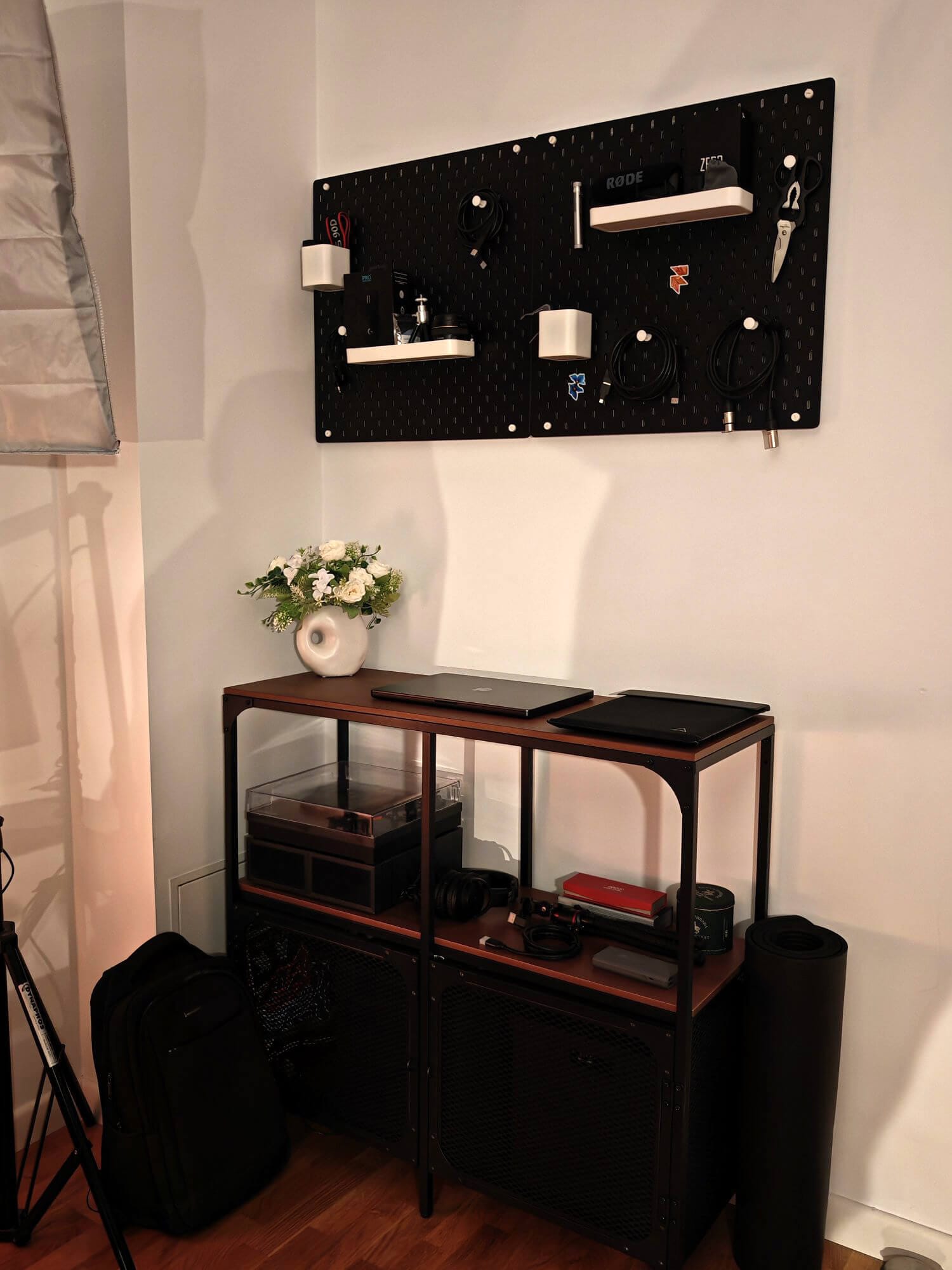
Right now, I’m focused on growing Artone and helping ambitious teams build things that matter.
Down the line, my goal is to launch and grow a product of my own — something that brings together everything I’ve learned so far.
You can find me on Twitter or LinkedIn if you want to connect 😄
Take us through your setup
| Item | Model |
|---|---|
| Monitor | Philips IPS 27″ 4K UHD ViewSonic 24″ FHD 240Hz AOC 24″ FHD 144Hz |
Monitor mount | From AOC (I forgot the exact name) |
| Laptop | MacBook Pro M4 Max |
| Speakers | Edifier S350DB |
| Headphones | TRUTHEAR × Crinacle ZERO: RED |
| Keyboard | Logitech G915 TKL |
| Mouse | Keychron M3 |
| Mouse mat | Logitech G640 |
| Chair | Secretlab Titan Evo |
| Laptop stand | IKEA |
| Web camera | Canon EOS 90D |
| PC | Lenovo T7 34IAZ7 |
| Microphone | RØDE Procaster |
| Audio Interface | Focusrite Scarlett 2i2 |
Being productive at home is about getting the right things done, not everything done. That's why we built Bento Focus.
One of the key things I love about the setup is that it’s not just mine.
It’s a space my girlfriend and I built together – a little corner of our home where we can both get focused work done, side by side.
It’s separate from the rest of the apartment and has become our go-to zone for deep work, calls, studying, and everything in between.
Having a space we both share makes it feel more intentional and grounded.

It probably took us about a month to put everything together.
We picked out the furniture, painted the wall, mounted shelves and lights, and brought in some fake plants to warm the space up and give it a bit of a natural feel.
Nothing overly complex.
Just a lot of small details that added up.
The lighting, especially, was important to me. I spent a good amount of time getting it just right, with smart bulbs set to warm tones to make the whole room feel calm and cosy.

The room itself is a mix of minimalism and personal touches, with little elements and items that feel like ours.
I love the mix of black, white, and dark wood colours — it gives the space a cosy, grounded vibe.
It’s the kind of space that lets you disconnect a bit from the rest of the house and mentally shift into work mode.
Though to be honest, I still end up working from the sofa some days — but we try to keep this room as our dedicated focus zone.
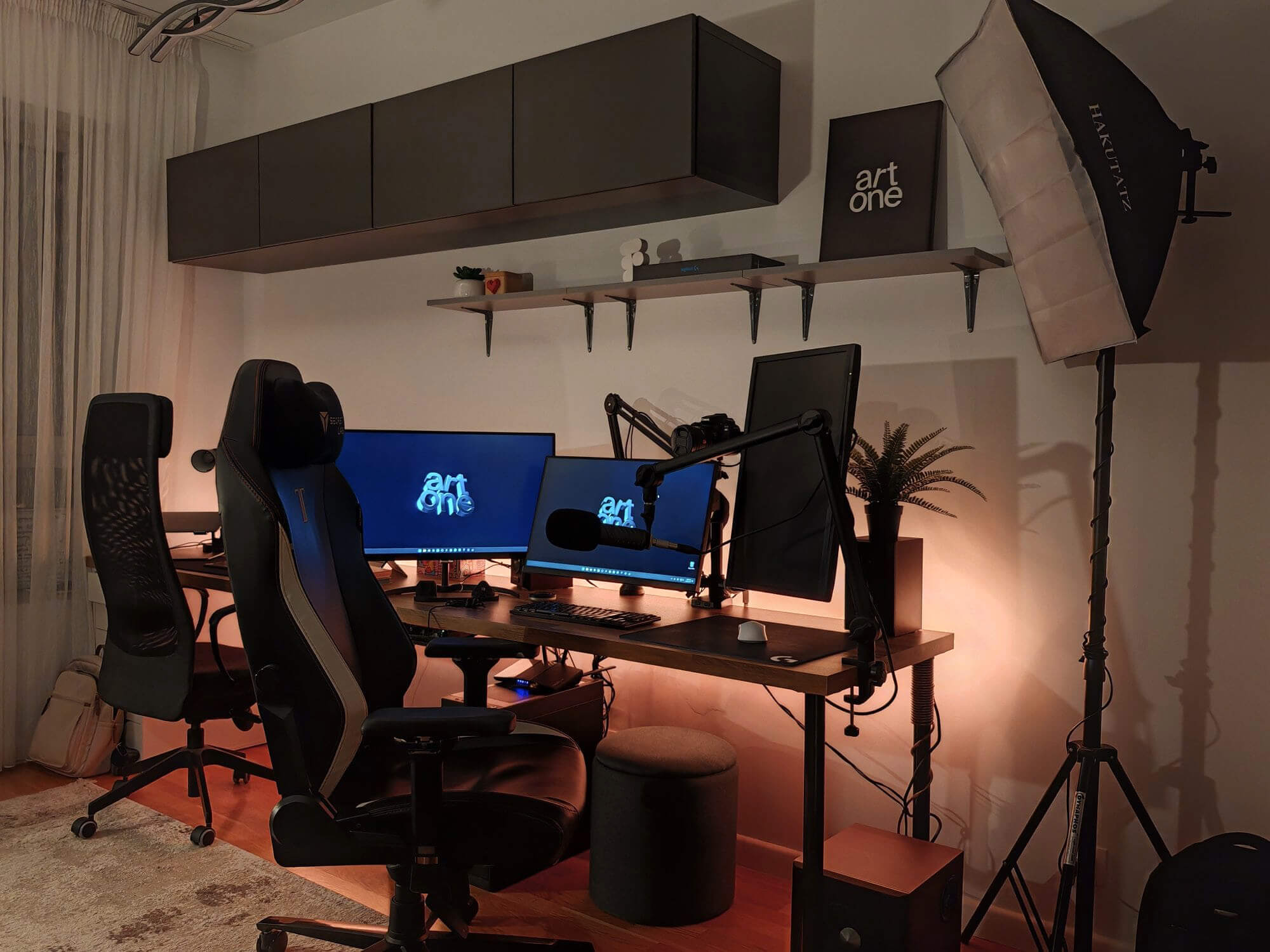
The biggest struggle was definitely the kitchen countertop I turned into a desk.
It’s three metres long, which I totally underestimated when I tried to fit it into my car (spoiler: it didn’t).
Even in a van, we barely managed it.
I had to hold it out the back while we transported it through the city.
Getting it up to the fifth floor was also a pain, but now it’s the centrepiece of the whole setup – so it was worth it in the end.
If there’s one thing I’d improve, it’s the little FJÄLLBO shelf corner setup.
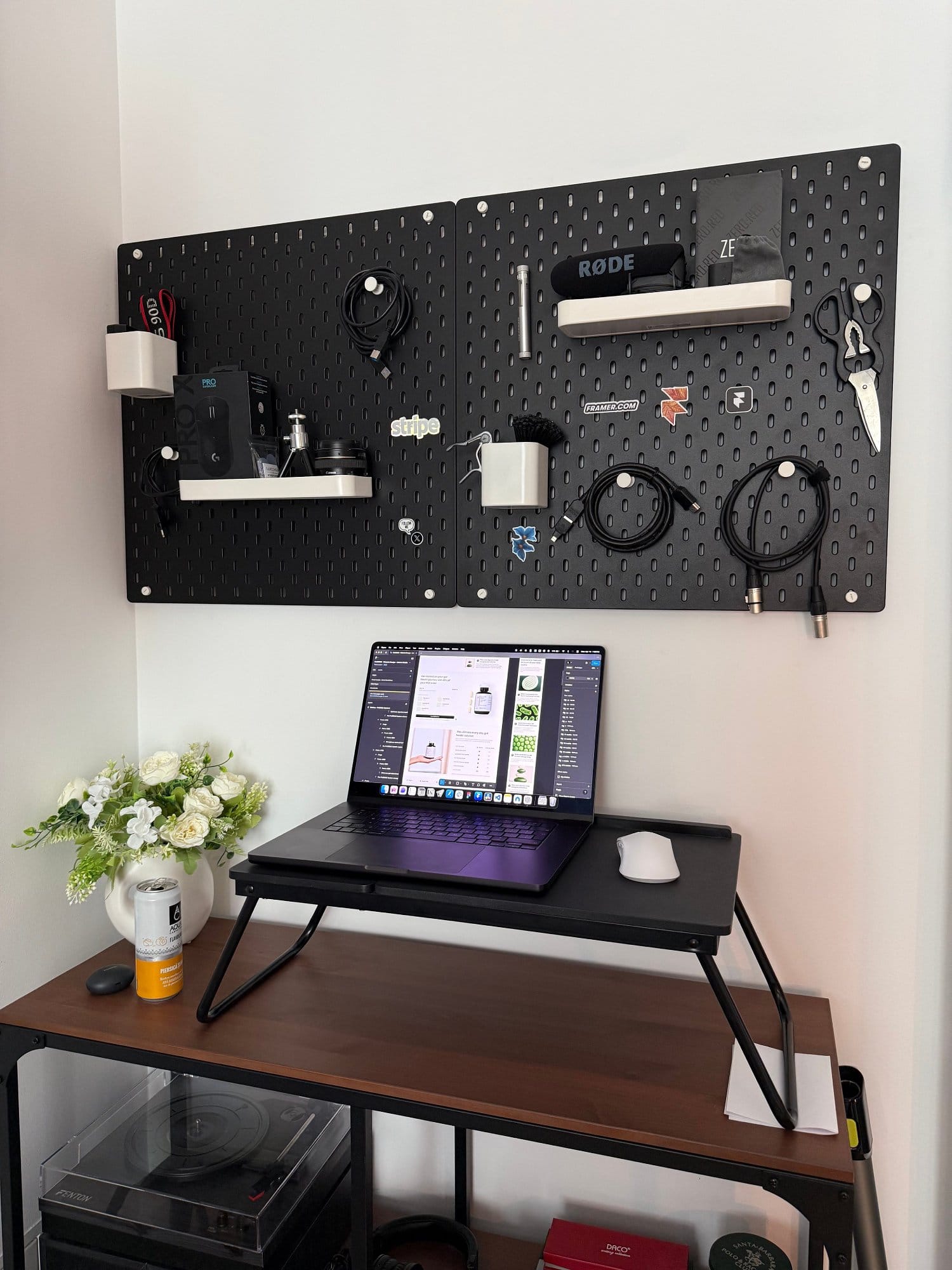
I love the way it looks, but recently I started using it as a kind of standing desk — and it’s too short for that by default, so I’ve hacked it together with a laptop stand.
It works, but it’s not exactly pretty.
What’s your favourite item on your desk?
It’s not technically on my desk, but my favourite item in the workspace is a small 3D-printed version of the Artone logo sitting on the shelf behind me.
My brother made it for me as a gift, since I’d been wanting something in the room that represented the agency.
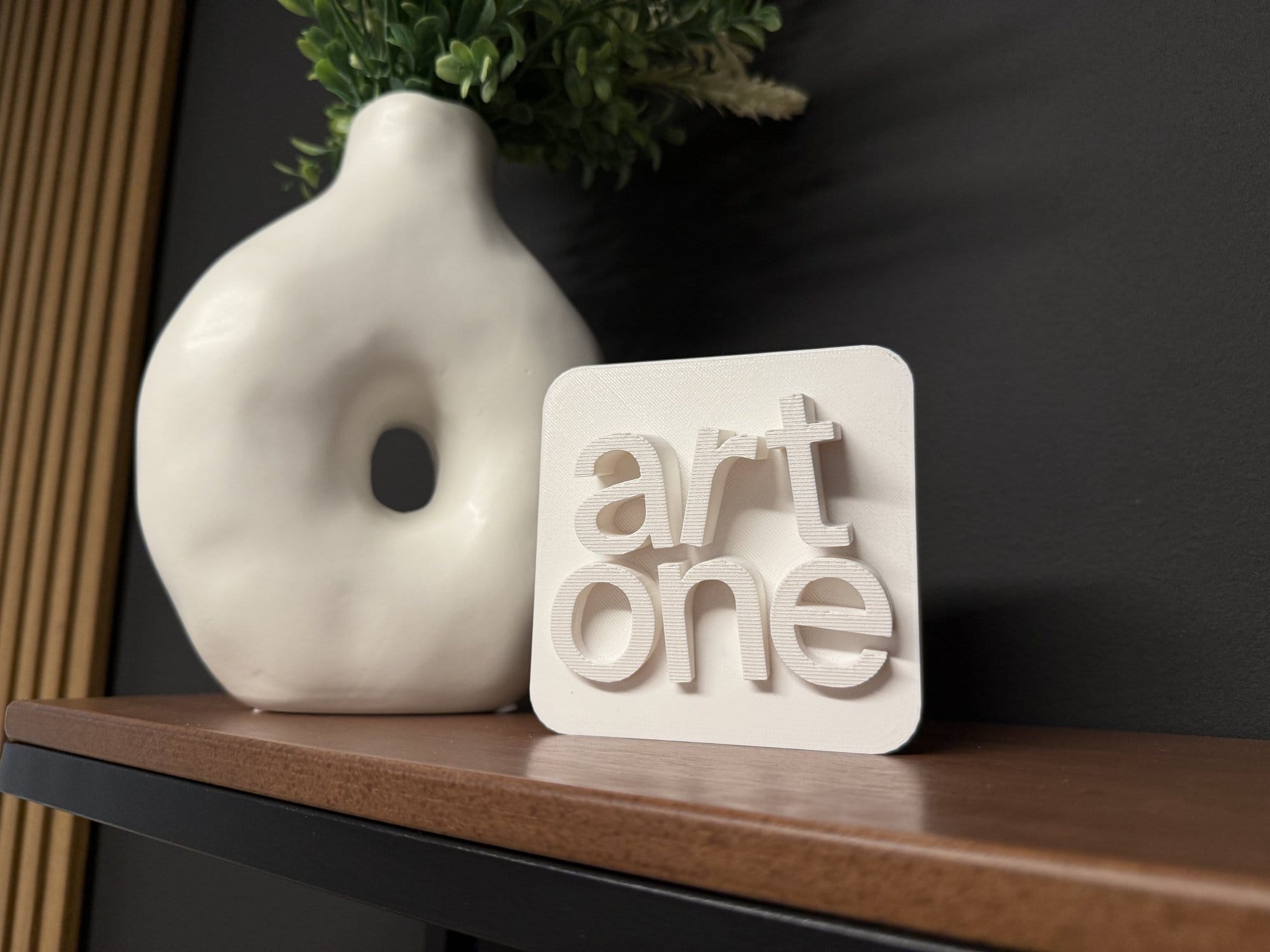
Funny enough, when I first saw it, I got a little annoyed because the logo wasn’t perfectly centred left to right.
My OCD kicked in hard.
But over time, that flaw became my favourite thing about it.
I’ve always been a bit of a perfectionist — especially in my work — and it sometimes leads to anxiety when I over-focus on details.
This logo is now a reminder that design doesn’t have to be perfect.
Definitely one of the more meaningful pieces in the room.
What apps or tools do you use to get things done?
Most of my work happens inside Figma and Framer.

These two tools are where I spend the majority of my time — whether it’s designing interfaces, building out websites, or collaborating with clients.
That said, one tool I probably use more than anything else is Apple Reminders. It’s not fancy, but it works.
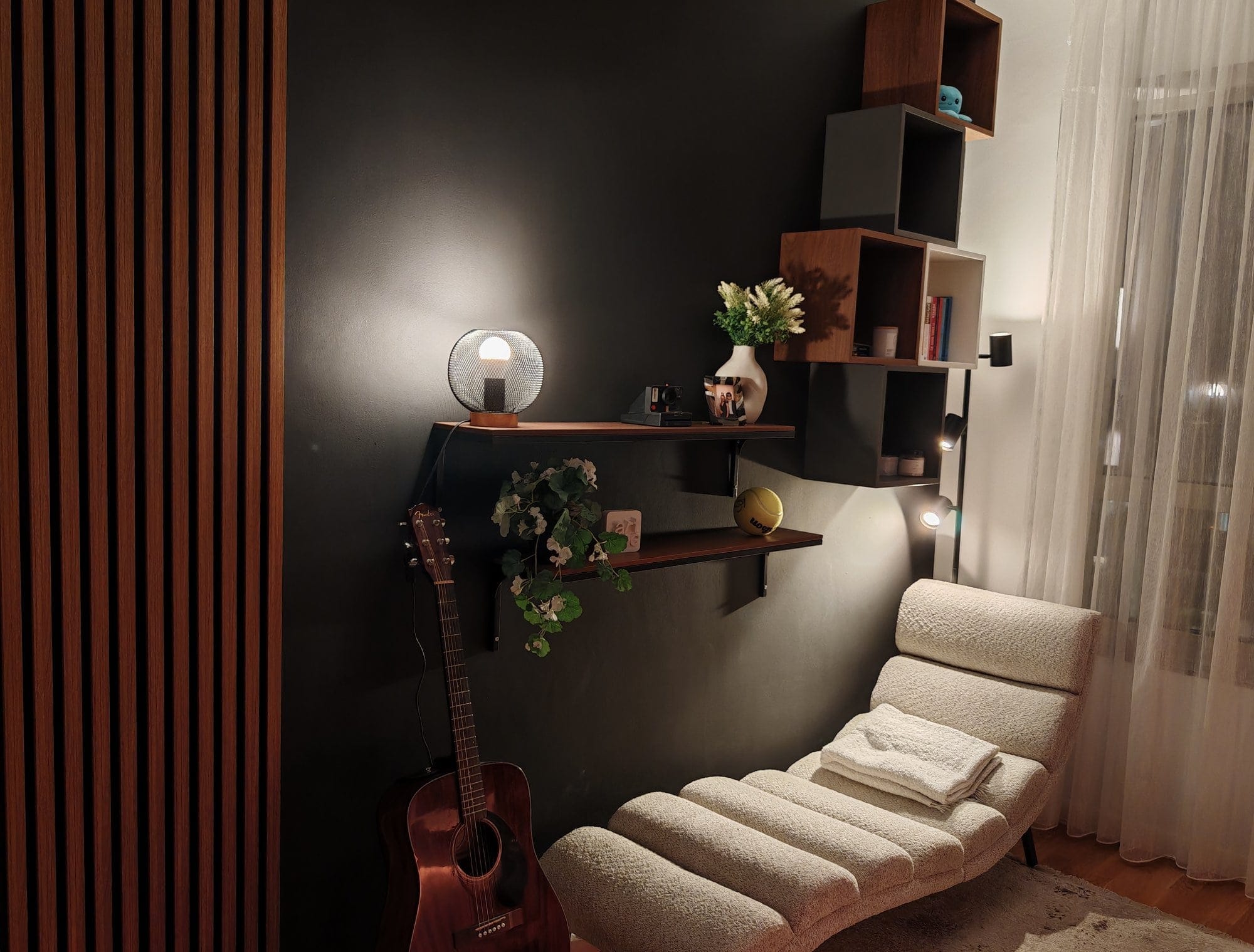
I use it religiously to keep track of all the little things I need to do during the day.
I’m constantly telling Siri to “remind me in two hours” or “tomorrow morning” – otherwise I’ll forget everything once I get working.
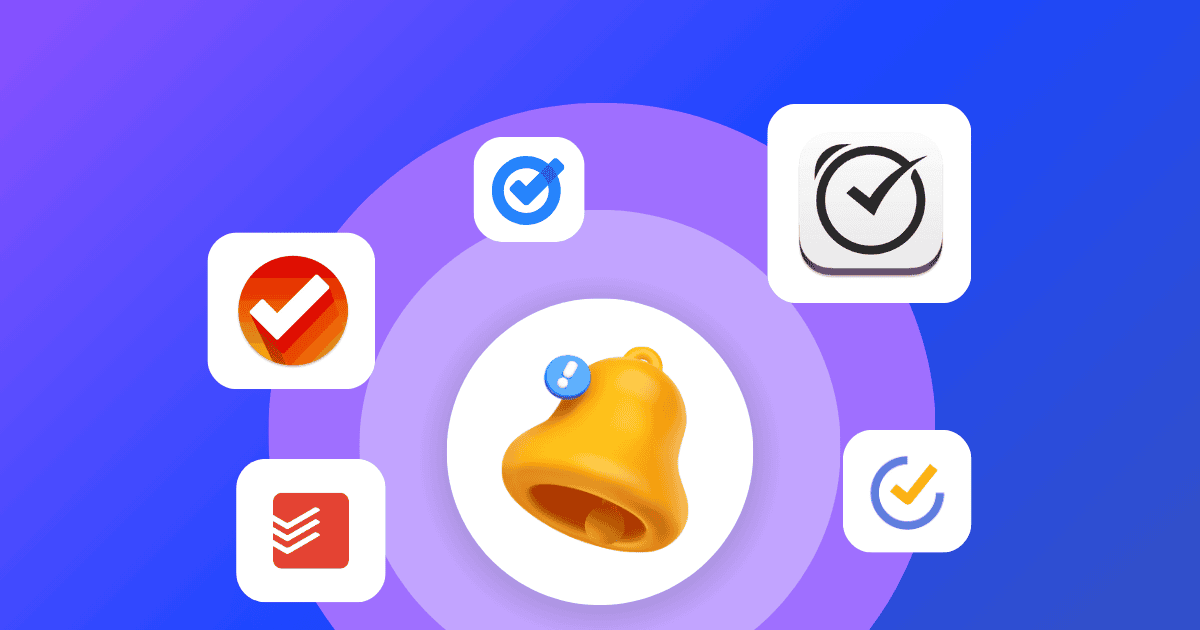
It’s super simple, but it keeps my head clear so I can focus on the real stuff.
What books, blogs, or podcasts recently caught your attention?
Lately, I’ve been reading Ayush Soni’s Medium page, where he shares raw, honest updates about running his design studio, Hex.
His Studio Updates series feels more like a public journal than polished content — which is exactly what I love about it.
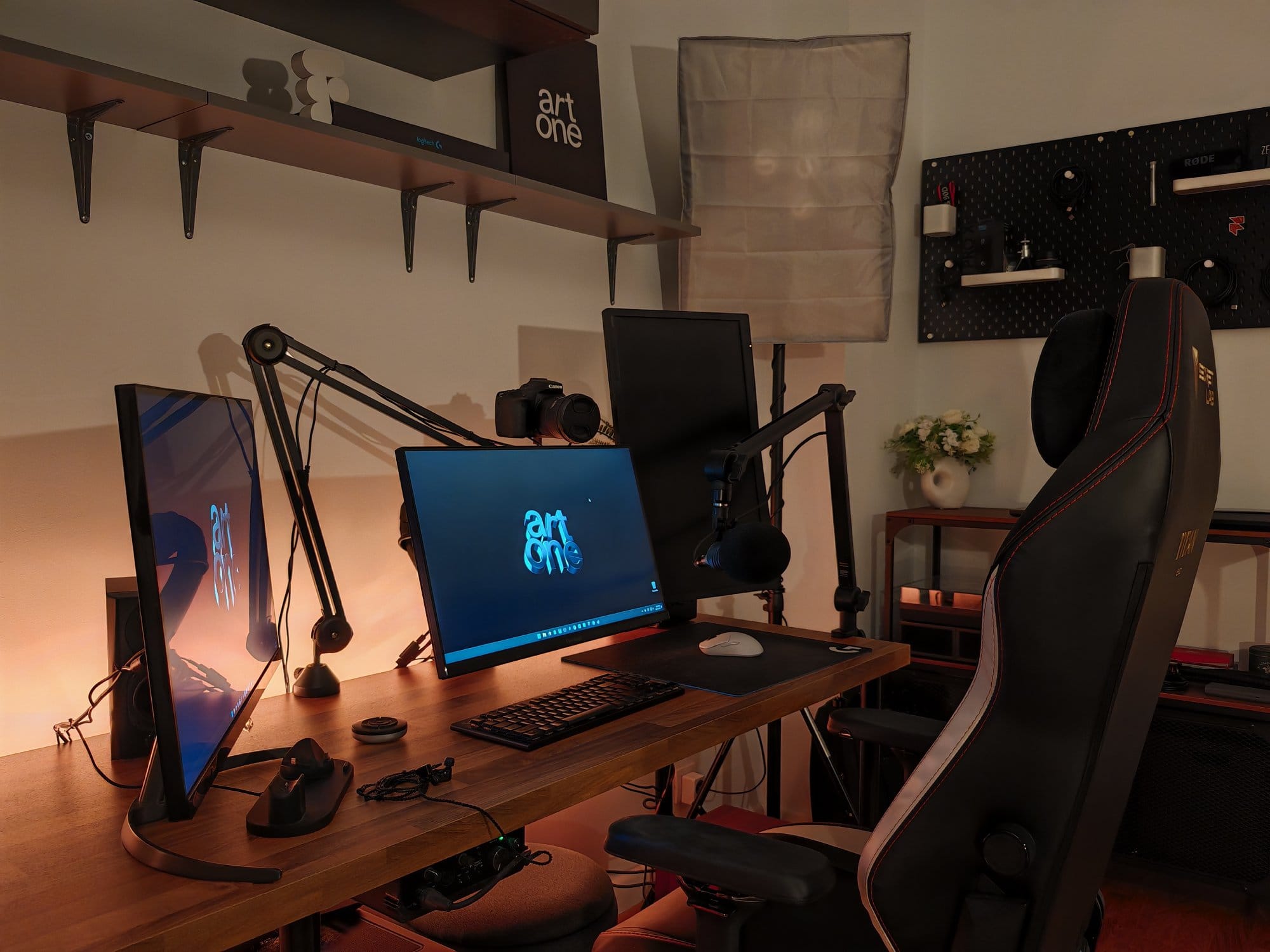
I also recommend Lovish Saini’s writing.
He runs Otherdays and publishes deep, practical tips on going solo as a designer.
It’s super valuable if you’re thinking about starting your own studio.
Both of them have inspired me to start sharing more of my own thoughts around design, startups, and running a creative business.
I’ve started publishing a few pieces on the Artone site, and I hope to build it out more over time.
Any tips for other makers who want to improve their workspaces?
Invest in good lighting.
It’s honestly the best “furniture” you can buy.
Turn off the harsh, flat overhead light and go for low-level lighting — like lamps and LEDs — to create shadows and depth.
It completely changes the mood of a room.
Personal preference here, but try to stick to warmer tones (easier on the eyes and feels more welcoming), and aim to keep a consistent colour palette (apply something like the 70–20–10 rule).
What does your typical day look like?
These days I usually wake up around 8 am and go to bed around midnight.
I used to be more of a night owl, designing at 3 am, but lately I’ve been trying to be more disciplined with my routine.
First thing in the morning, I (unfortunately) check my phone — mostly Slack messages from clients in different time zones — and then maybe a quick scroll through Twitter.
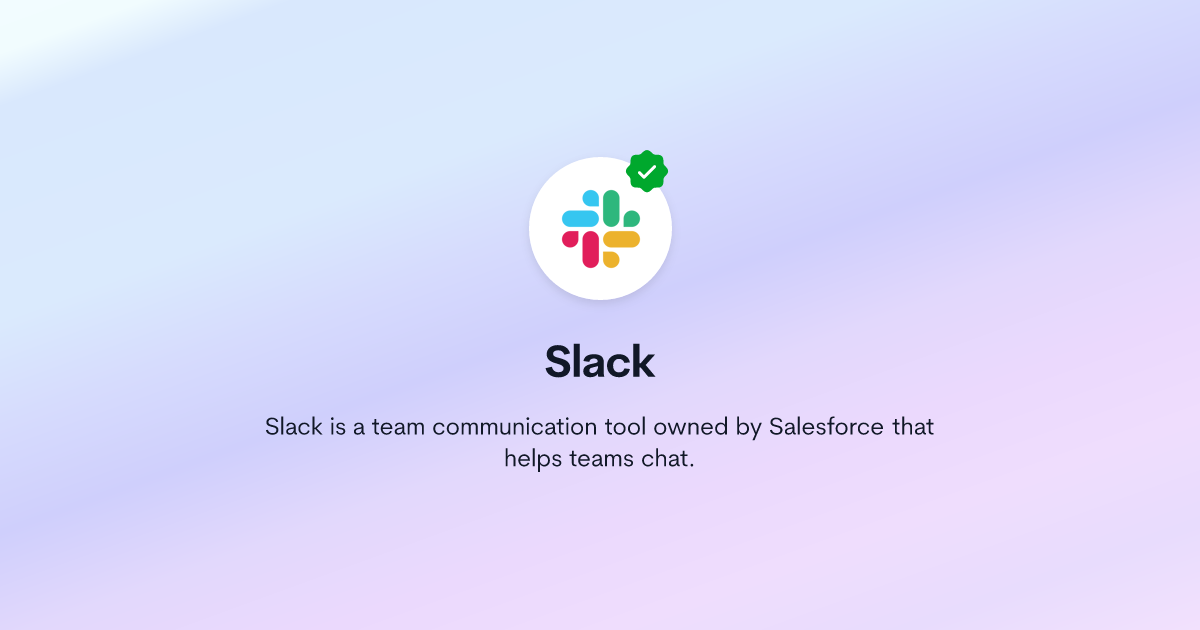
Most of my day is spent doing design work for clients.
It used to be mostly UI/UX, but lately I’ve been doing a lot more web design, which I’ve realised I actually enjoy more than I expected.

It’s a bit more creative and visual, while product design can get mentally draining — especially when working through complex B2B flows.
I definitely struggle to balance creative work with admin tasks, especially when I get caught up perfecting small design details.
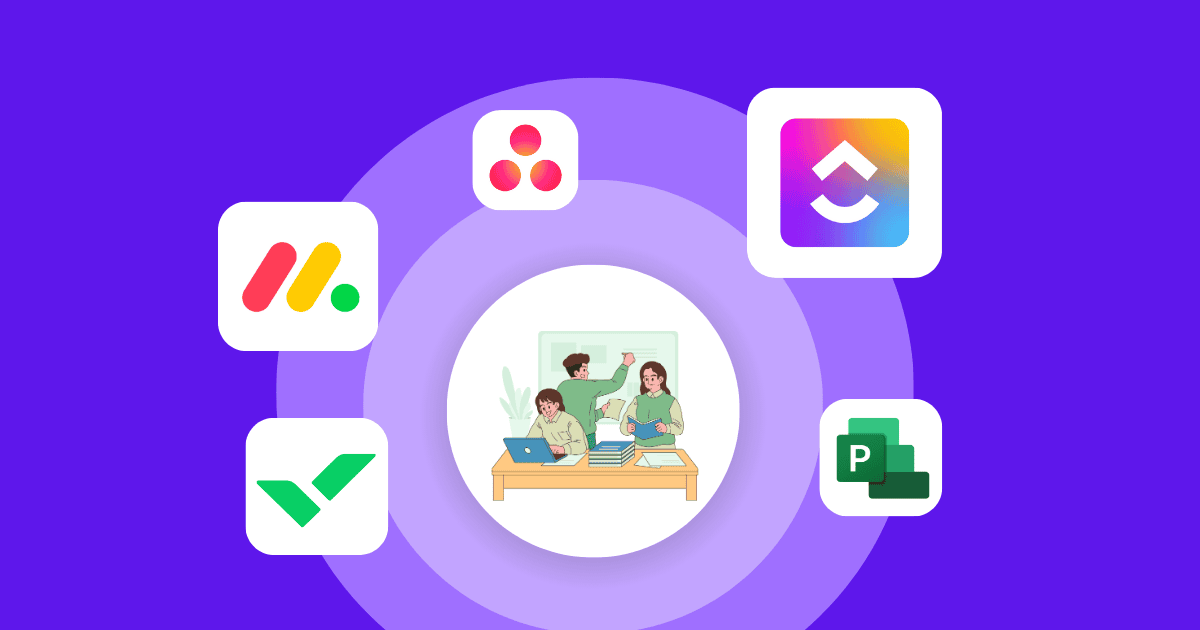
When that happens, admin usually gets pushed to the weekend.

Outside of work, I try to stay off the computer as much as possible.
I used to game a lot, but not so much anymore.
These days I’d rather spend time with my girlfriend, see some friends, go out for food, or play some sports.
Your tips for working from home?
Try to block distractions as much as possible. I rely on Raycast’s focus sessions — it helps me stay away from social media and get into a proper flow.
Don’t forget to drink water.
Sounds basic, but I constantly forget when I’m deep in work.
Take short breaks from time to time. Step away from the screen for a bit — your client won’t go bankrupt if you take 10 minutes to reset.
Go for a walk, let the sun hit your face, breathe some fresh air. It’s the best mental reset, especially when your work and life happen in the same space.
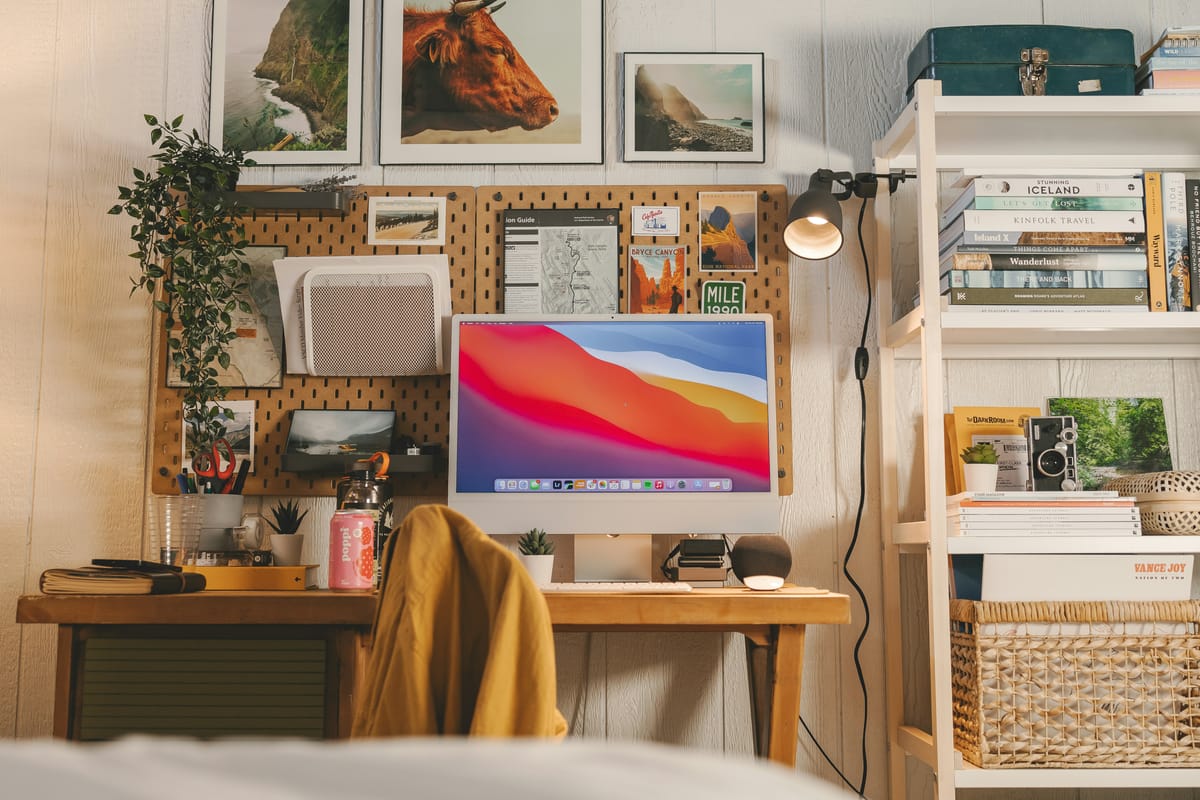
We’re a reader-supported publication. This article might contain affiliate links. It means we may receive a commission if you click a link and buy a product that our maker has recommended. The interview was done independently.


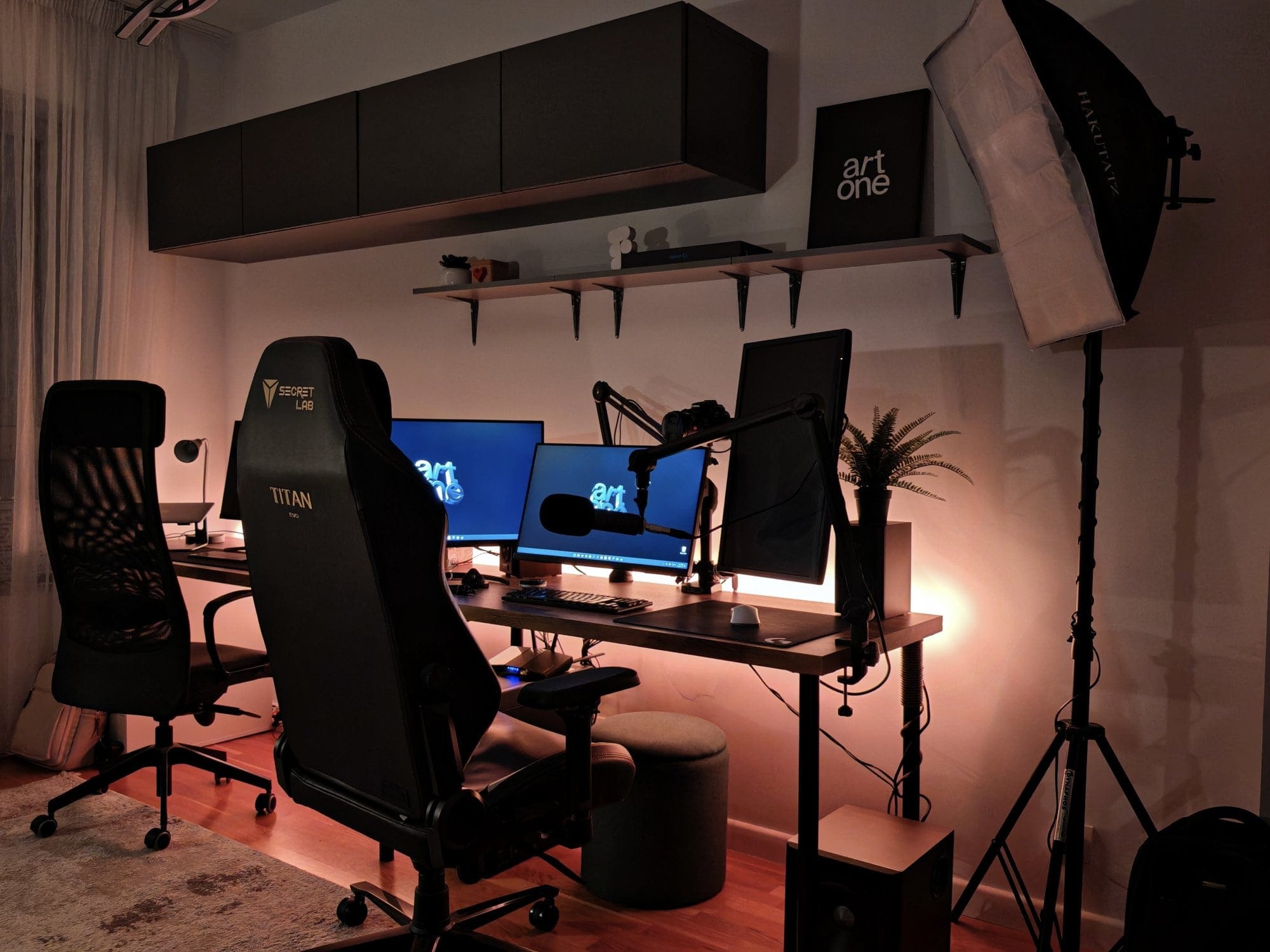





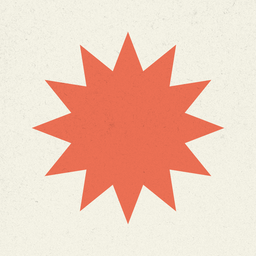
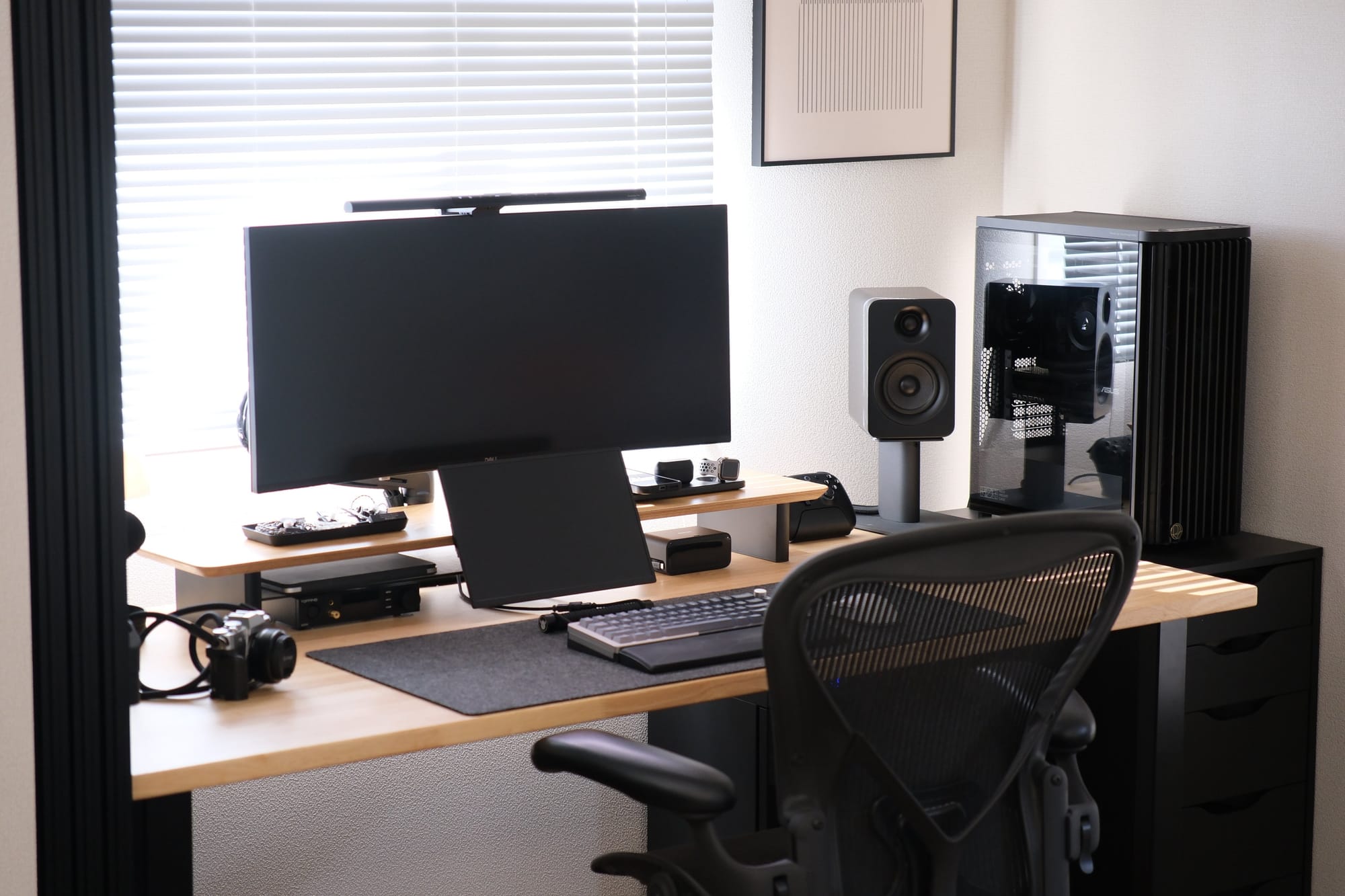
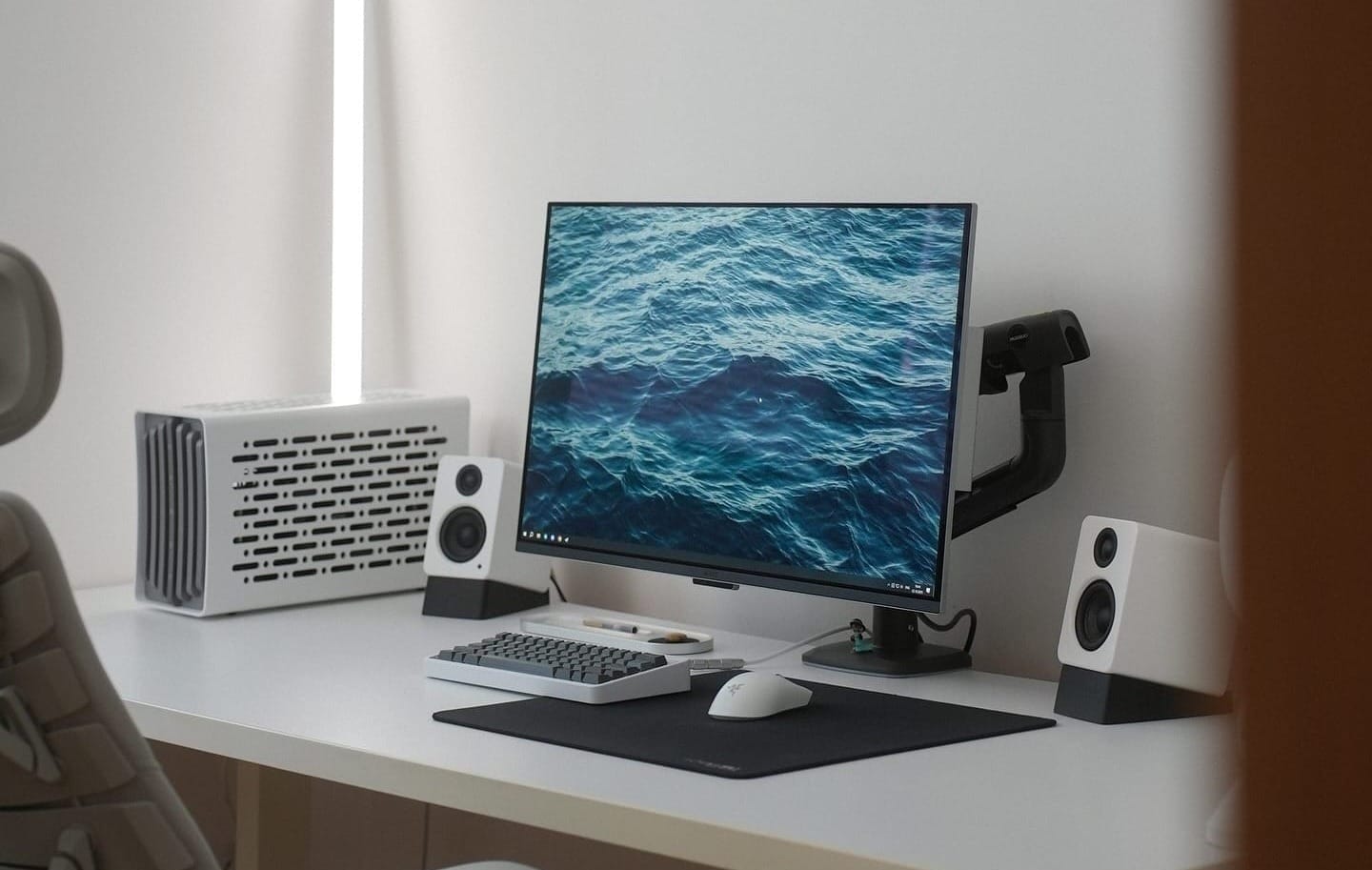
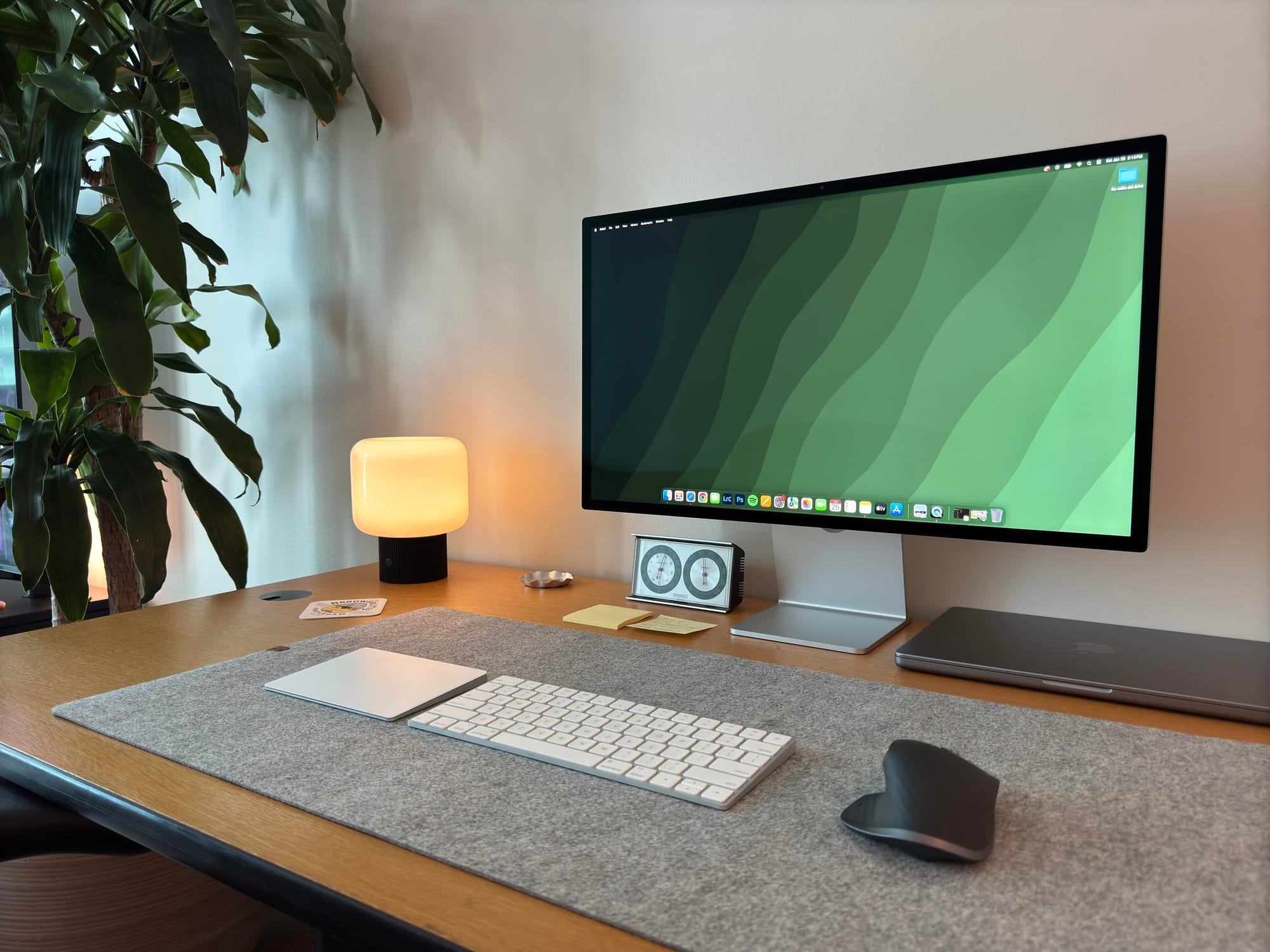
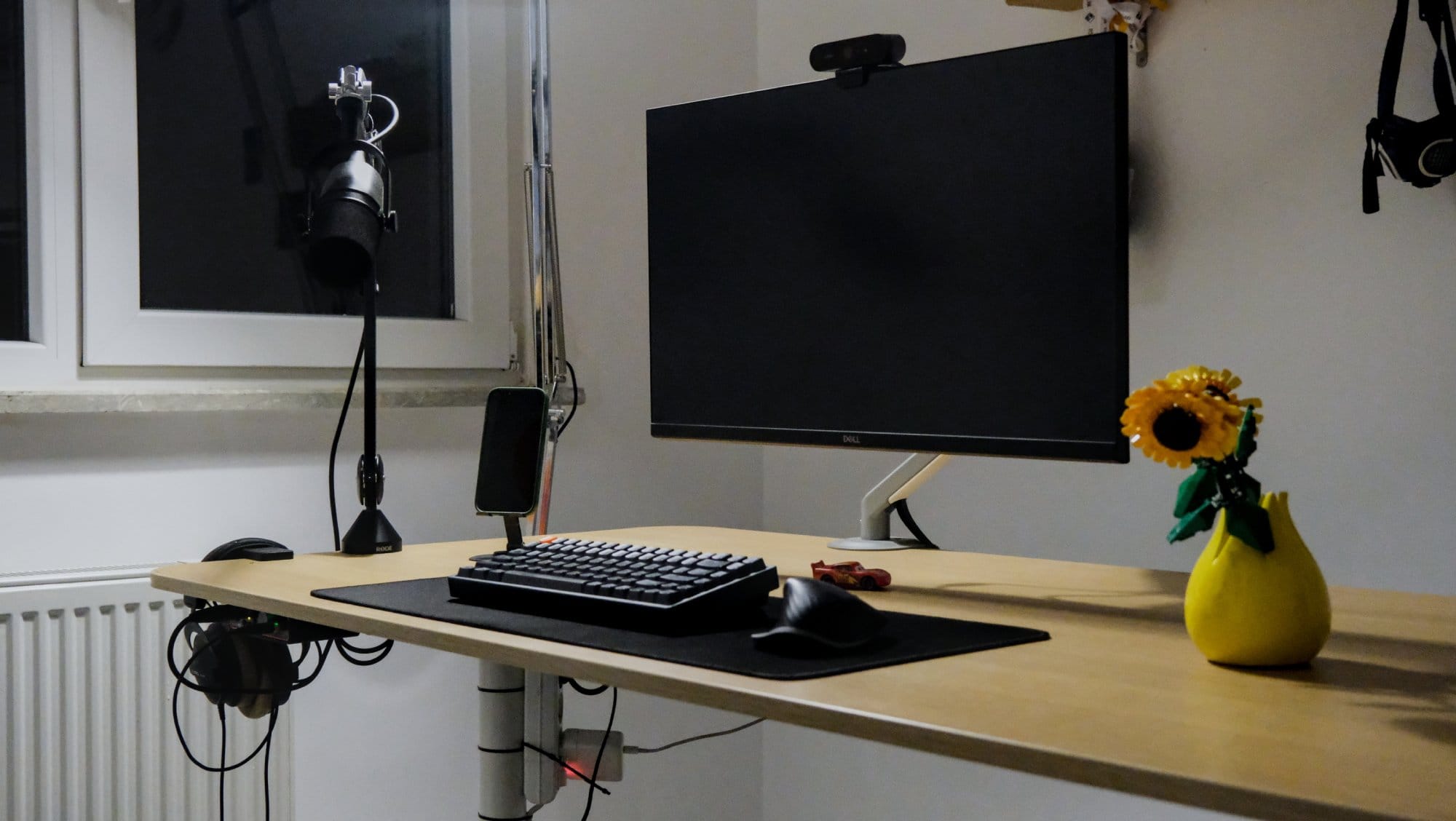

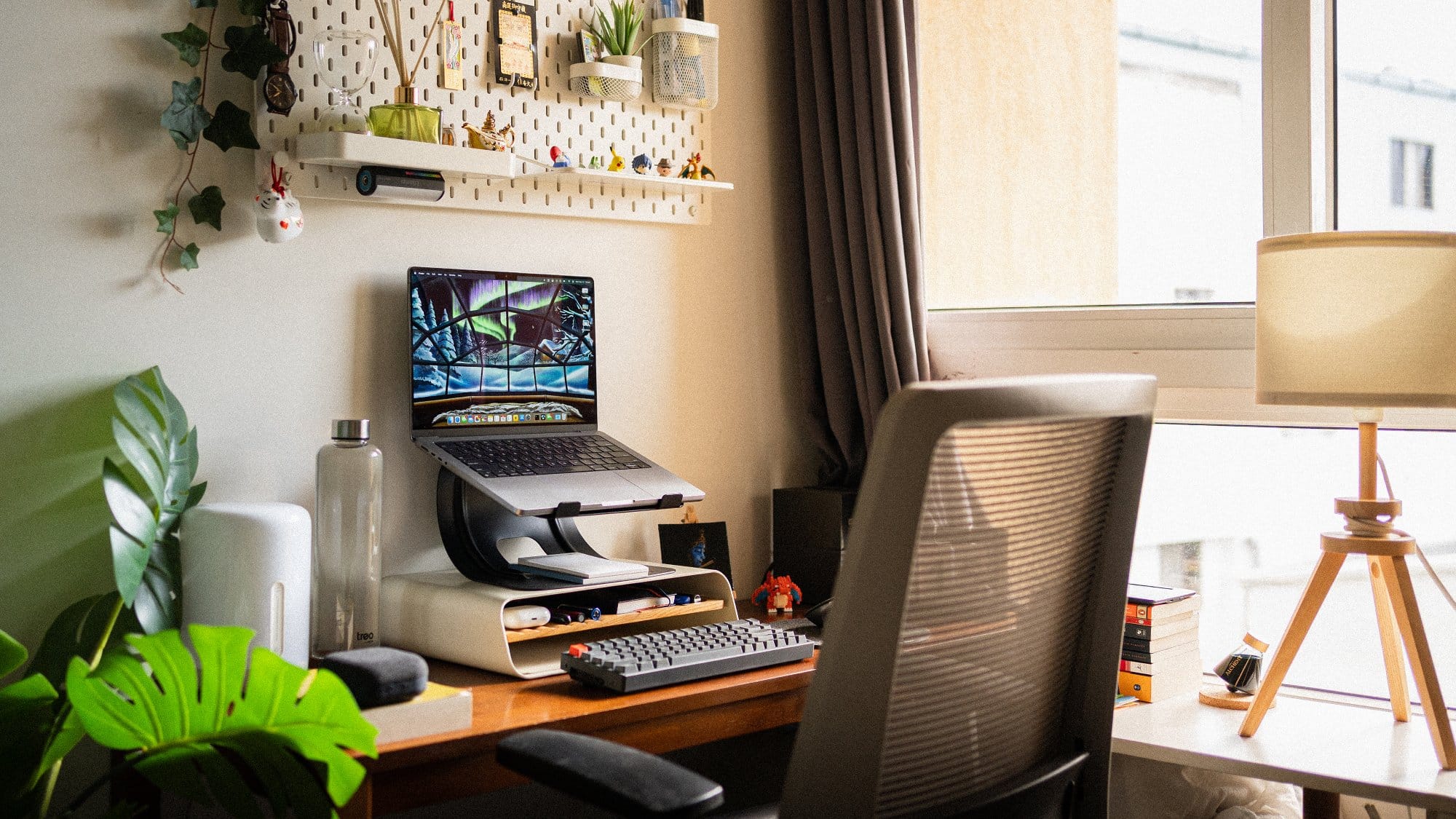
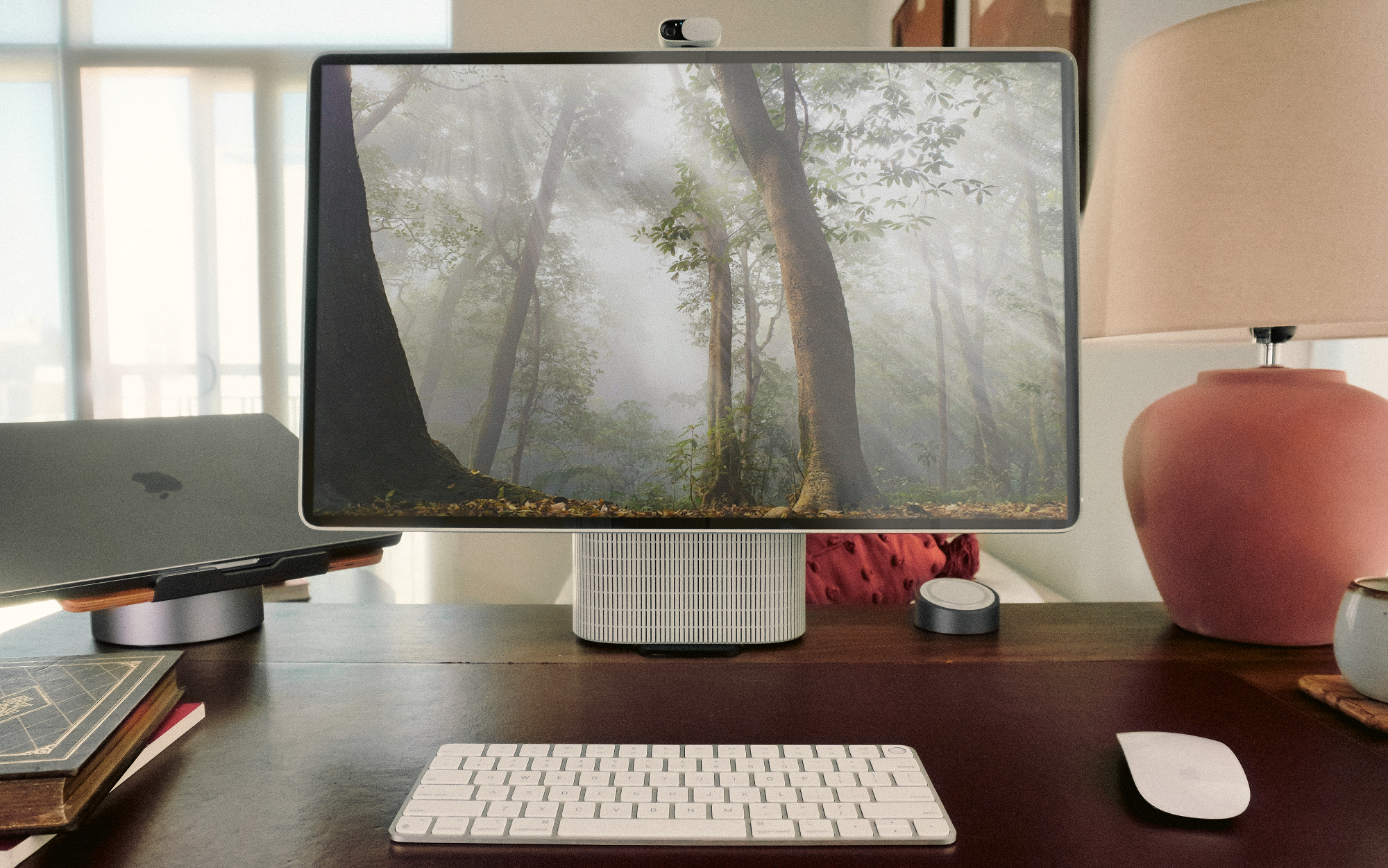
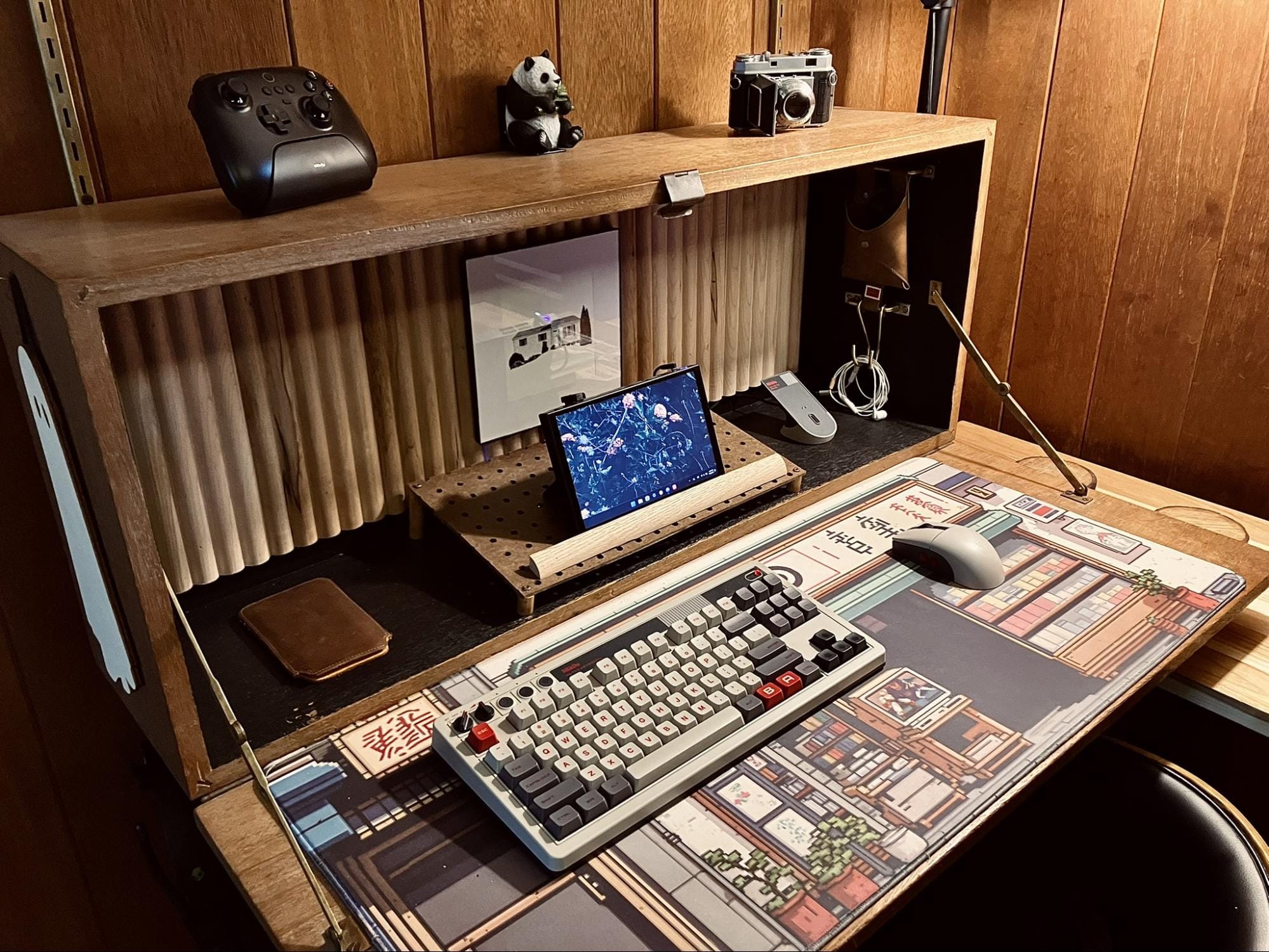
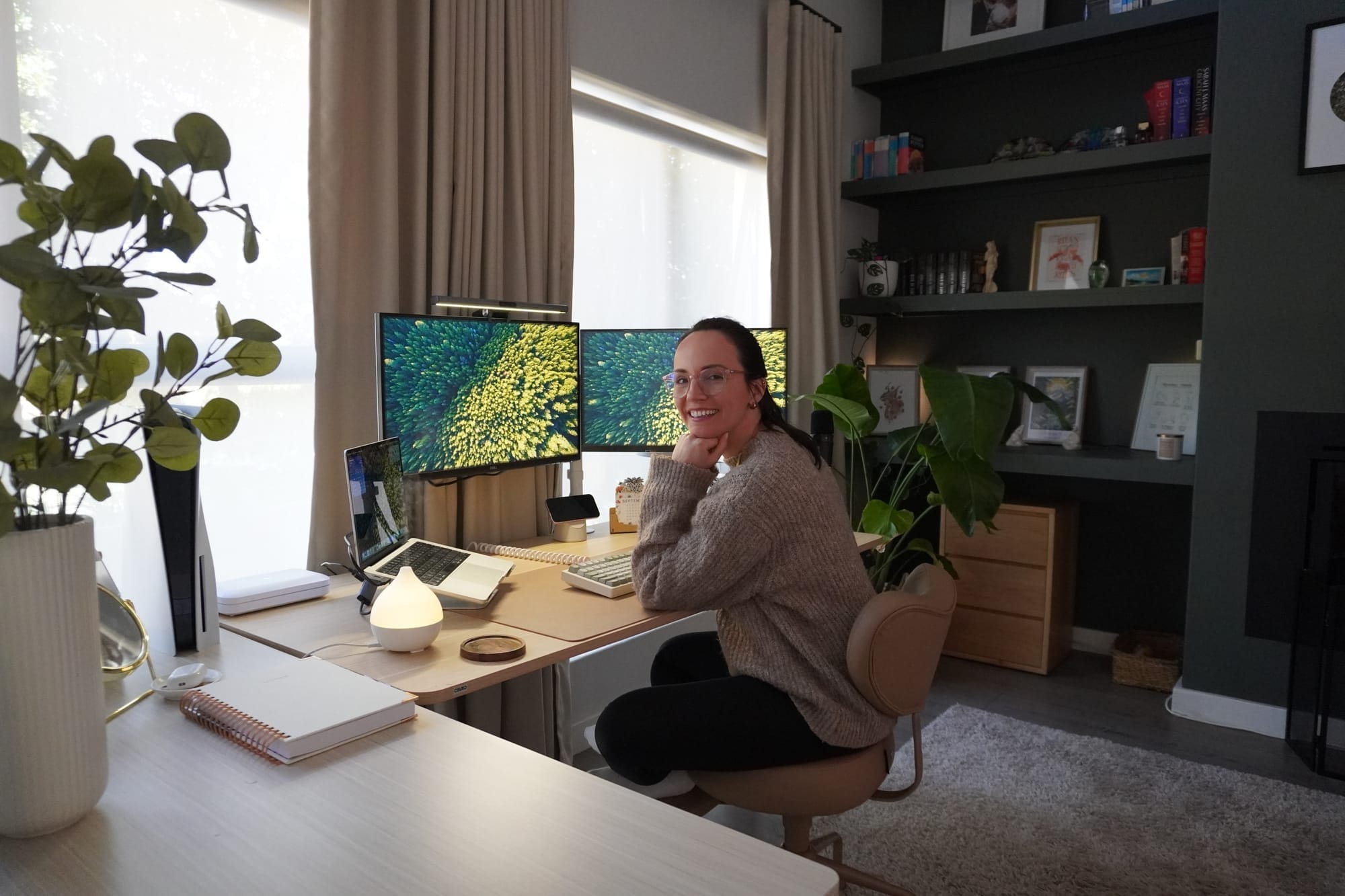
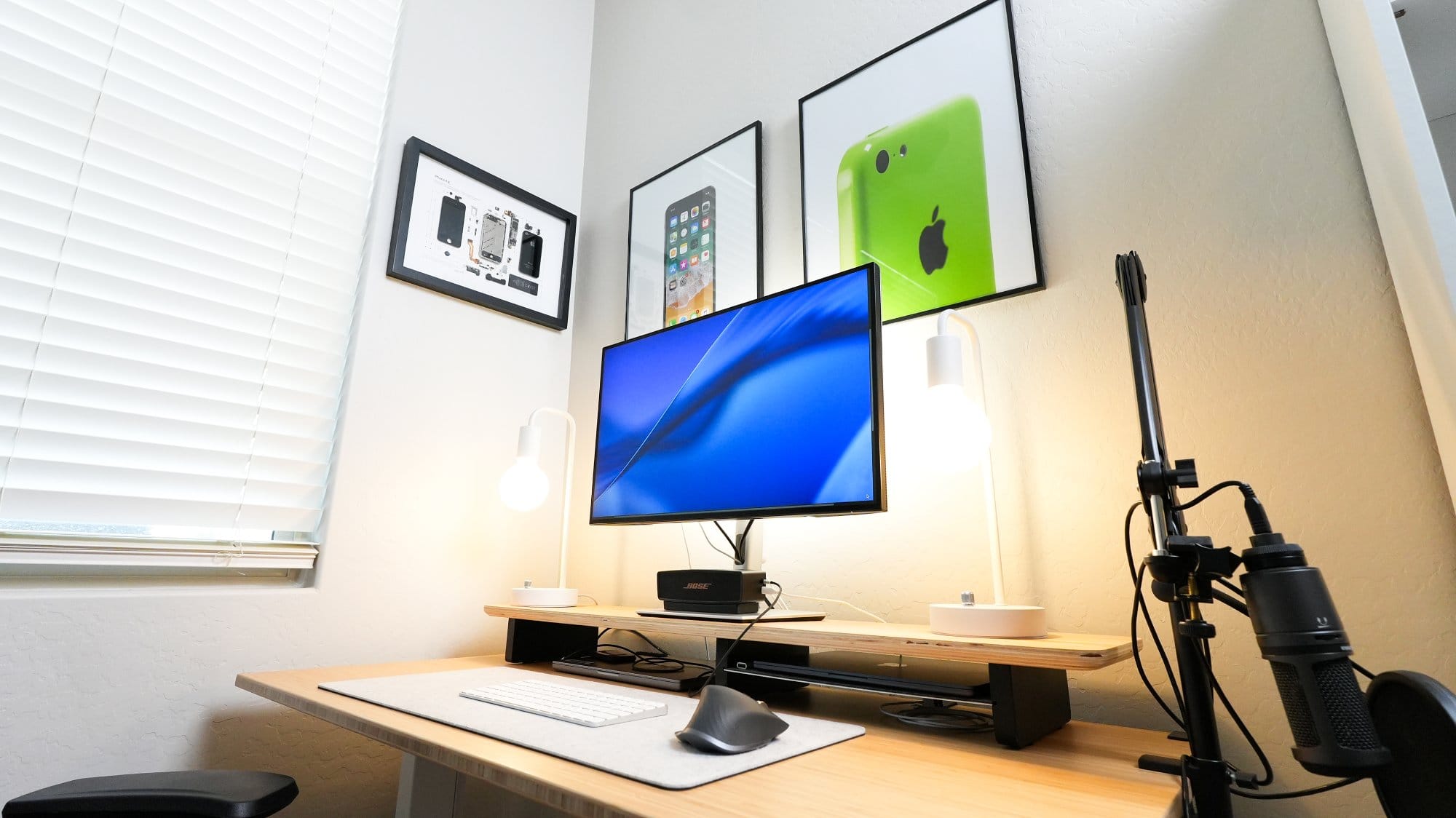
Discussion